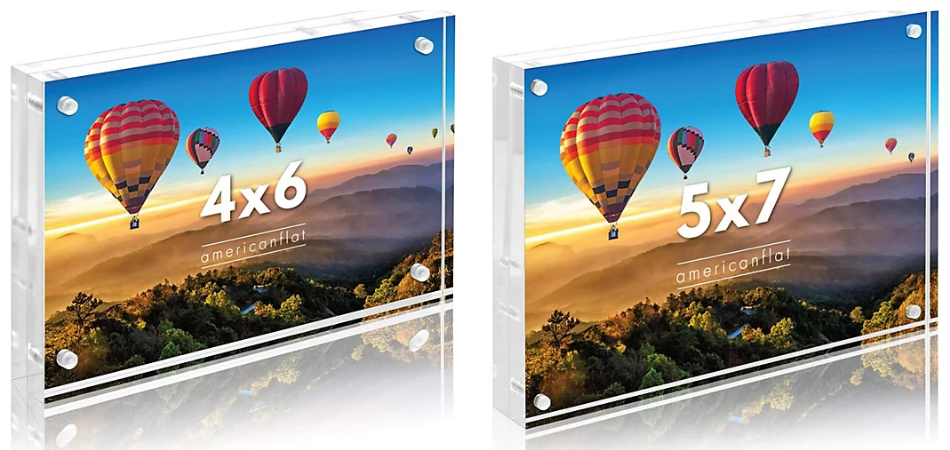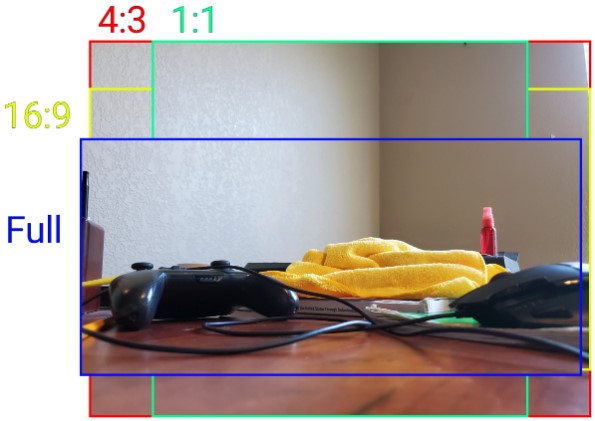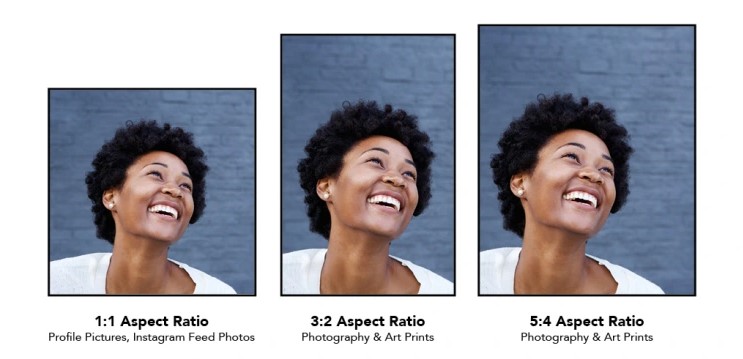When it comes to printing your photos, size does matter. The photo print size that you choose determines the quality and amount of detail in your images. It is not only important for any occasion like birthday cards and invitations but as a decorative display too. With our focus on 4×6 vs 5×7 photo print sizes, you will get to know which one is best for you.
For most of us, deciding whether to print a photo in 4×6 or 5×7 sizes can be confusing. Also, it is easy to get lost in technical terms like file formats, resolution, color mode, and scan size when working out the best solution.
The print sizes are different, and the print prices are not always equivalent. So, which one to choose?
This article will give a detailed comparison and differences of 4×6 vs 5×7 photo print sizes.
Key Takeaways:
- The most obvious difference is the size when it comes to 4×6 vs. 5×7.
- 4×6 is a standard size that can be used for photos and other projects, while 5×7 is usually only reserved for photos.
- While there may be little difference between 4×6 and 5×7, they each have unique qualities that serves different purposes.
- 4×6 prints tend to be slightly smaller than 5×7 prints when framed, making them easier to display in spaces with limited wall space.
4×6 Vs 5×7 Photo – Which Photo Size Is Best For You?
When choosing a photo print size, you will want to consider the purpose of the print. Larger prints can be more appealing to the eyes but are often intended for framing and may require a larger frame. Smaller prints, on the other hand, are better suited for desk, bookcase, or a wall.
So, to make it all clear to you, we have listed the differences between the two below. This will make it quite easy for you to make the right choice.
The Aspect Ratio of Pictures
The aspect ratio describes the ratio of pixels in width to pixels in height for an image.
The most noticeable difference between 4×6 and 5×7 print sizes is that the aspect ratio for a 4×6 print is 3:2, whereas the aspect ratio for a 5×7 print is 7:5.
A 4×6 print has the aspect ratio of 3:2, which means it is 30% longer than tall. A 5×7 print has an aspect ratio of 7:5, which means that it is 40% longer than tall.
The easiest way to understand this concept is to imagine two pictures of an identical building; one 4×6 picture and one picture that is 5×7. In the 4×6 photo, you will see the top half of the building cut off, whereas, in the 5×7 photo, you will see the entire building.
Cost Factor of 4×6 and 5×7 Pictures
The cost of your 4×6 and 5×7 orders depends on your location. Also, the cost varies based on the company or services you are using. For example, the price at Walmart is different from that of Shutterfly.
In general, the 4×6-square footprint costs $0.29, while the 5×7 one costs $0.39. However, there may be a slight difference in cost between 4×6 and 5×7 photos.
Picture Frames
The main difference between a 4×6 and 5×7 picture frame is the image size they hold. While a 4×6 holds an image that is 4 inches wide and 6 inches high, a 5×7 holds an image that is 5 inches wide and 7 inches high.
You notice that the difference between 4″ x 6″ and 5″ x 7″ is a matter of 1″. What this means is that 5″ x 7″ picture frames will cost more than 4″ x 6″, as there is more material used to create the frame and it requires more time to produce.
However, if you are looking for a larger photo for people who stand further away from the frame to look at it, then you may want to go with a 5″ x 7″. Five inches by seven inches will hold a picture that’s about twice as large as 4″ x 6,” which may make it easier to see from across the room.
On the other hand, if you want a smaller photo, 4″ x 6″ is the way to go. They are less expensive and take up less space on your wall.
Image Composition Factor
The composition factor of an image depends on what size you are printing it at. The composition factor is the ratio between the image’s initial and final printed sizes. So, the difference between the 4×6 and 5×7 image composition factors is the amount of detail captured.
A 4×6 image captures more detail than a 5×7 image. Composition factors are a way to help you determine how different size photos will look to the eye. For example, if a photo is taken to be 4×6 and then made into a 5×7 or vice versa, it will look different to your eyes.
The 4×6 image composition factor is 1.5. That means that width (4) to height (6) is 1.5:1. This means that when you look at a photo that has been displayed in this format, you will be able to tell that it’s 4×6 by sight.
A 5×7 image has a composition factor of 1.4, meaning that it has a different shape than the 4×6 image you might be used to seeing. So, for example, if you display both sizes side-by-side, they won’t match up evenly on their sides or in the middle.
What Is Camera Aspect Ratio?
Understanding the camera aspect ratio is not as difficult as it seems. If you are just getting started with photography, you may find yourself staring at the dial on your camera, wondering what to set it to. On the other hand, if you have been shooting for a bit, you might be struggling with the way your images look in print.
The good news is that the aspect ratio isn’t as complicated as it seems. Essentially, an aspect ratio is a comparison of the width and height of an image. Knowing how to use this to your advantage can help make your images look even better than they already do.
The most common aspect ratio on a digital camera is 3:2. The aspect ratio can be easily printed on standard paper sizes (8×10 and 11×14). If you want to print an 8×10 photo, it needs to be printed at 300+ dpi (dots per inch) on a printer with high-quality ink.
Examples of Camera Aspect Ratio
There are many different types of aspect ratios, but for photography, the most common ones are 4:3 and 3:2. Nowadays photographers often prefer 3:2 as the ratio covers more horizontal viewing area compared to 4:3. However, 4:3 is still very popular for prints and social media.
Below are those that are common and facts you should know about them.
4:3 –
A 4:3 camera aspect ratio is the most traditional and popular format available. The 4:3 camera aspect ratio refers to the shape of the picture that is recorded by the digital camera.
When a 4:3 image is captured, it will be rectangular shaped. However, when it is played back on a widescreen TV or computer monitor, it will appear square-shaped.
Also, the 4:3 aspect ratio that is common in cameras provides a classic picture aesthetic. It appears flat and rectangular in the image, providing ample space around the subject being captured. The 4:3 camera ratio produces full-frame albums, preserving memories of any event in their entirety.
3:2 –
The 3:2 is the general term and category name for an aspect ratio used in small- to medium-format digital cameras, mobile phones with camera capability, and other photographic devices. The pixels in the image are three units wide and two deep.
Also, the 3:2 is being used in many cameras these days because it captures more detail or information on the top and bottom of the scene. So, this is a great ratio for photographers who really like to take their time composing the perfect picture.
16:9 –
The 16:9 camera aspect ratio has the same width as the 4:3 aspect ratio but is taller. This format is very common on smartphones and is also popular for MiniDV camcorders, as well as widescreen TVs and HDTVs.
Also, the 16:9 camera aspect ratio delivers a wider field of view without sacrificing your ability to put yourself in the shot. This is ideal for taking self-portraits or spontaneous shots of you and your friends. You can capture more moments with life-size or bigger faces or opt for a lens that captures you and everything around you.
Get to Know Better: How To Photograph Glass Without Reflections And Shadows?
Why Is Aspect Ratio Important In Photography?
Camera Aspect Ratio is important because it provides a specific aspect ratio (width vs height) of your camera. This is used to crop the video feed to ensure that you are zooming in on the video feed without stretching or distorting the picture.
There are two significant importance, and they are for technical and aesthetic reasons.
Technical Importance of Aspect Ratio
The technical aspect ratio (or TAR) is a specification that has been developed by content creators to help standardize how videos are presented to consumers on different screens and video platforms. When you watch the video, your device will automatically calculate the best TAR based on the screen size of your device.
Aesthetics Importance of Aspect Ratio
The aesthetic aspect ratio of images is an important factor while designing your layouts. It is an aspect ratio that is formed by the width of a photo and its height in relation to each other.
The major importance of the aesthetic aspect ratio is that it improves the look of a photo. Also, it helps to convey emotion and gives enough room to express anything in your photo.
Why Should You Choose To Print 5×7 Photos Over 4×6? What’s The Advantage?
There are many reasons you will want to print 5×7 photos over the standard 4×6 size.
- A 5×7 photo is significantly larger and will be more noticeable than a 4×6. If you are looking for a way to make your photos stand out, this is one way to do it.
- A 5×7 photo is great for creating photo books. You can arrange prints in different patterns and create your own custom photo book that looks truly unique.
- The 5×7 photos are great for group shots, where you want to make sure everyone is included in the frame.
- This ratio is also great when photographing something tall and thin, like a bridge or tall building. This allows you to include more of the object in the frame without sacrificing image quality.
- If you are using your photos for business cards or other promotional items, a 5×7 might be more appropriate in size. You can print only one photo per sheet instead of using up to 2 whole sheets for one picture.
- Additionally, 5×7 prints are great for creating photo collages. The extra size gives you plenty of space to work with and makes your finished project stand out.
Conclusion
The most obvious difference between 4×6 and 5×7 print sizes is that one is smaller than the other. The 4×6 photo is an inch shorter and an inch narrower than the 5×7.
Because of this difference in size, you can fit more 4×6 prints per sheet of paper than 5x7s, and because they are smaller, they take up less space on your computer or the wall when printed.
But, if your focus is to capture more details and create a better scenario, I’ll suggest you go for 5×7. You should also be aware of the prices too. All in all, whether you choose 4×6 or 5×7 totally depends on why you want to print the image and I’ve talked all about that in detail. Hope this helps!



